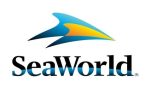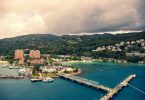Under the current leadership, the Hawaii Tourism Authority turned from a tourism promotion board into a tourism authority that focuses on changing visitors’ behavior. HTA wants tourists to be culturally interested, educated, mindful, and rich.
Many in the travel business feel Hawaii Tourism Authority must be the only tourism office in the world that is anti-tourism, fighting overtourism and rejecting those that want to party, eat and go to the beach.
The Hawaii Tourism Authority under the directive of CEO Jon de Fries has also become the most silent state-funded agency in Hawaii, avoiding contact with media such as eTurboNews by all means.
Every tourist destination in the world likes to have high-spending visitors. Hawaii is no exception, but for the most part luxury hotels and resorts expected by those high-spending visitors are very rare on Oahu, Maui, Kauai, and Molokai, but dominant by the Four Seasons Resort on the island of Lanai, the private island.
However, the demand for travel to Hawaii is rising and perhaps seen as a problem by HTA. A motel-type resort, such as the Westin Vacation Club in Princeville Kauai can charge $900 for a night and gets away with it.
HTA changed the way Hawaii is marketing the State. Hawaiian words hardly anyone understands or speaks sound exotic.
Announcements in the Hawaiian language at the airports, marketing brochures, and marketing websites indicate a Hawaii uses a different direction to market its Pacific Island destination.
Nothing wrong with being different. Nothing wrong with preferring visitors that are mindful of the environment or the Hawaiian culture.
However many visitors enjoying time away from the stress in their home region travel to Waikiki to shop, to eat, and to party. Having a good time on the beach is more important for them than thinking about what country, state, or culture they are in.
A good time and feeling welcome, such as the famous Aloha spirit is making all the difference.
A Cultural experience for those that want to skip a day on the beach means the Polynesian Culture Center or a Luau (BBQ and lots of Mai Tais) – not anything authentic.
Such visitors do spend money, some go to the Ala Moana Shopping Mall. These are the majority of visitors.
Tourism is a business and the Hawaiian Tourism Authority under native Hawaiian leadership wants tourism to become more of a cultural exchange and experience. Tourism has a responsibility and touches the entire economy on the islands. It’s the biggest business in the State of Hawaii and benefits everyone, native Hawaiians and the majority non-Hawaiian population.
Therefore only concentrating on the protection of the Aina is great but may discourage visitors at the same time. It doesn’t take much to go from a tourism boom to a tourism vacuum. Over the years this has been a painful reality in this tourism-dependent US State.
Currently, most hotels are expensive and full, and planes are at capacity, but the competition is not sleeping.
More non-stops to the Caribbean from the US West Coast is a first sign. Japanese preferring Thailand or Bali over Hawaii is a clear indication.
Luxury all-inclusive resorts in Jamaica that cost half of a 3-star hotel in Hawaii are a reality. Sierra Leone is seeing its beaches as African Hawaii.
European travelers are more culturally interested and stay longer. For most Europeans, Hawaii remains an exotic dream destination. European travelers are active, not really shoppers, but they like authentic experiences and don’t always need five-star resorts.
Europeans flying all the way to Hawaii are different from those vacationing in Spain. They like the experience part of a trip, and these are not the beaches alone.
European stay weeks and not days such as Americans or Japanese do. This may however be unrealistic based on the current price structure in Hawaii.
Therefore the move by the Hawaii Tourism Authority to reach out to this far away but a potential group of tourists is a good move.
As part of its strategic plan, HTA began providing support in the Europe market in 1998 when the organization was established. Due to the global COVID-19 pandemic, HTA ended its contract for Europe in 2020 when tourism was at a near standstill.
HTA now has issued a Request for Proposals (RFP 23-04) to procure visitor education and brand management and marketing services for the Europe major market area.
In 2019, visitors from Europe spent $268.1 million, generating $31.29 million in state tax revenue (directly, indirectly, and induced) for Hawai‘i.
HTA, with the support of its board of directors, will resume its focus on Europe in 2024 with a new contract that will complement the current visitor education, brand management, and marketing efforts of HTA’s Global Marketing Team in the United States, Canada, Japan, Korea, China and Oceania (Australia and New Zealand).
This decision was based on input from HTA’s leadership team and Hawai‘i industry partners, as well as data from the Tourism Economics Marketing Allocation Platform, which synthesizes information and provides recommendations based on realizable returns, market costs, market risks, and constraints.
Another key emphasis by HTA to market to Europeans makes a nontraditional tourism idea surface.
HTA wants to drive visitor spending into Hawai‘i-based businesses as a means to support the economy, including supporting local businesses, festivals, and events; purchasing Hawaiʻi-grown agricultural products; and promoting Hawai‘i-made products in-market in partnership with HTA, the state’s Department of Business, Economic Development & Tourism (DBEDT), and the private sector.
The brand marketing will be targeted to mindful travelers with an emphasis on lifetime trip expenditures and increasing per person, per day expenditures in alignment with the Key Performance Indicators (KPIs) established in HTA’s 2020-2025 Strategic Plan:
Increased average daily visitor spending, increased total visitor spending, increased visitor satisfaction, and increased resident sentiment toward tourism.
Increased average daily European visitors spending will be wishful thinking by HTA. Daily visitor spending will be lower for Europeans because they stay longer.
Juergen Steinmetz, Chairman World Tourism Network, Hawaii
The HTA contract will commence on January 1, 2024, and will end on December 31, 2025, with an option to extend for an additional three years or parts thereof.
Interested applicants are strongly encouraged to participate in HTA’s pre-proposal conference via Zoom to be briefed on the procurement process and to ask questions.
The pre-proposal conference will be held at 8 a.m. HST on July 28. Proposals are due to HTA by 2:00 p.m. HST on August 25.
HTA will use the Hawaiʻi State eProcurement System (HIePRO) at hiepro.ehawaii.gov to issue the RFP, receive all offers, and issue any addenda to the RFP.
Inquiries regarding the RFP should be directed to [email protected].
(eTN): Hawaii is Searching for Mindful Tourists from Europe | re-post license | post content























